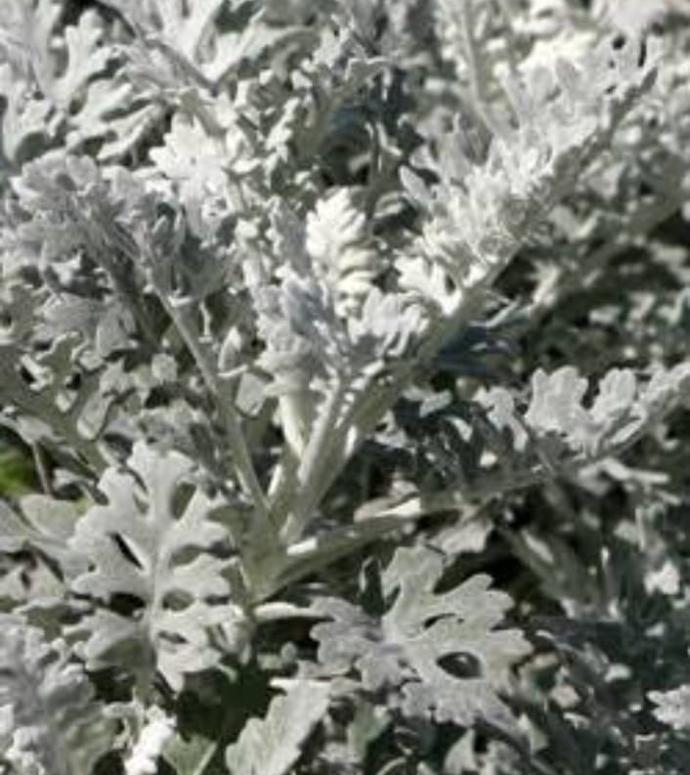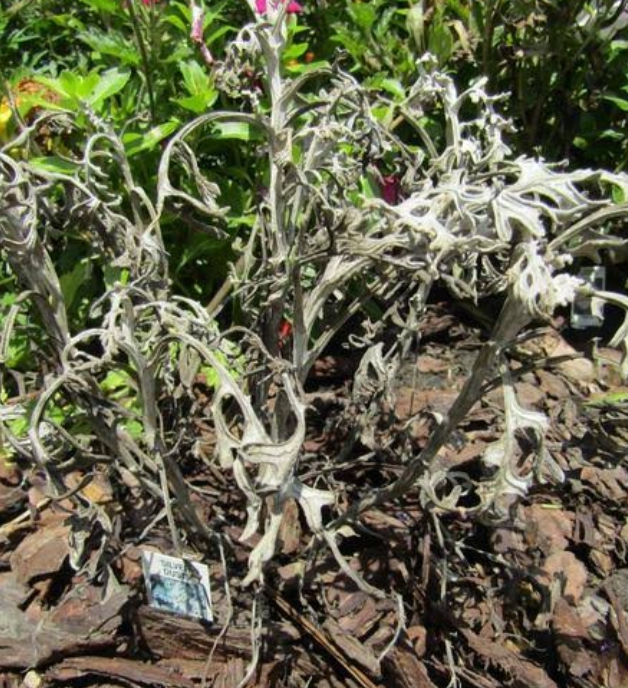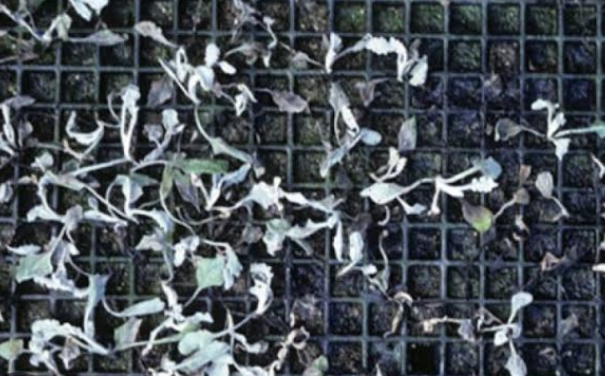Dust Miller Plant
Dust Miller, also known as Jacobaea maritima, is an outdoor plant with silver-grey foliage. Plant in well-draining soil with full sun exposure. Water consistently and deadhead spent flowers to promote continuous blooming. Pruning helps maintain a tidy appearance.
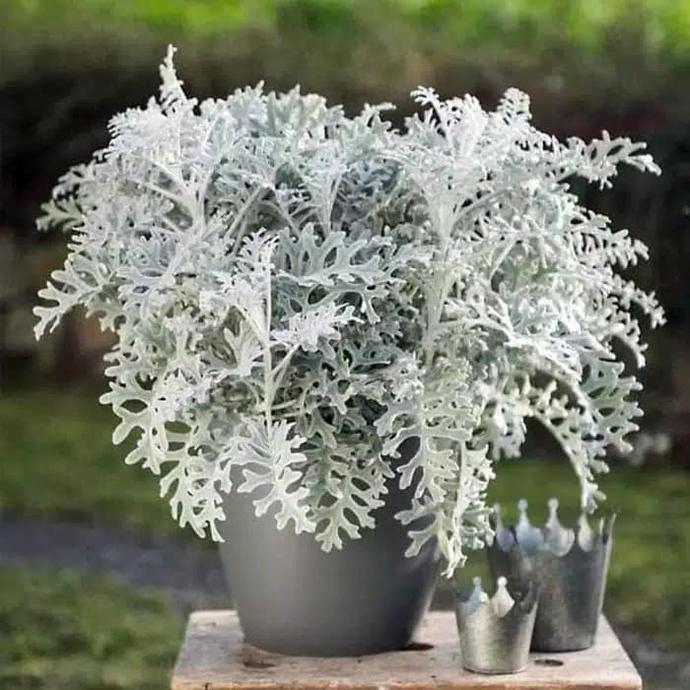
Habit
Perennial
Height
30 to 90 cm
Growth
Fast
Soil
Well Drained, Sandy
Shade
Full Sun
Moisture
Moist
Edible
No
Medicinal
No
Origin
Mediterranean
Climatic Condition
Warm, Dry
Temperature (°)
15 to 30
Humidity (%)
30 to 60 %
Potting media
Peat mix
Fertilizers
Low nitrogen, organic mix
Watering
Low
Plant Weight
200-400 g
Flowering Time
Summer
Soil Ph level
6.0 to 7.5
Water Ph level
6.0 to 7.0
Soil EC
0.4 to 1.0
Yield Per Plant
Ornamental plant
NPK ratio
3:1:2
life Span
Perennial
Health Benefits
Used in landscaping, drought-tolerant
Suggested Grow Media or Potting Mix ?
50% loamy soil, 30% compost, 20% sand
Suggested Fertigation/Fertilizers
Fertilize every 4 weeks with a balanced fertilizer.
Common Diseases and Remedies
Root rot, Blight
Leaves turn yellow and roots get rotted ,smelly due to over watering.
over irrigation should be avoid. Use well draining potting mix, for good drainage
What Is A Dust Miller Plant?
The term "dust miller" is often used to refer to plants in the genus Senecio, particularly Senecio cineraria. Senecio cineraria, also known as dusty miller or silver dust, is a popular ornamental plant grown for its attractive silver-gray foliage. It's commonly used in gardens and landscaping for its distinctive color and texture.
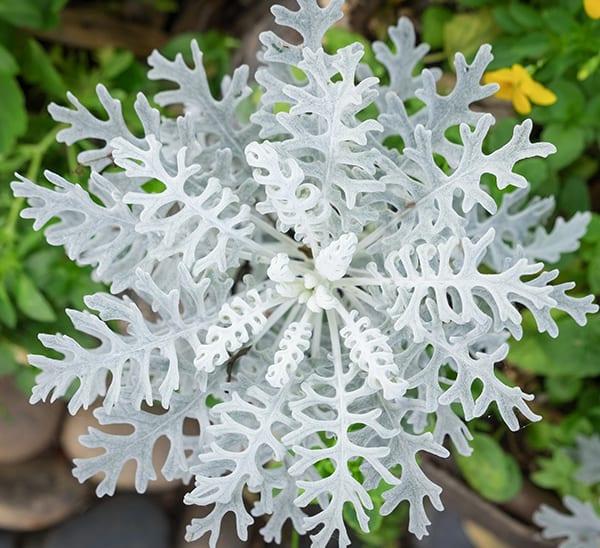
What are the different types of dust miller plant?
There are several varieties of dusty miller plants, each with its own unique characteristics. Here are a few common types:
1. Senecio cineraria 'Silver Dust':-
This variety is the classic dusty miller, known for its finely divided, silvery-gray foliage. It has a mounding growth habit and is widely used in gardens and landscapes for its striking appearance.
2. Senecio cineraria 'Cirrus':-
'Cirrus' dusty miller features deeply lobed, silvery leaves with a slightly fuzzy texture. It has a more compact growth habit compared to 'Silver Dust' and is often used as a border plant or in containers.
3. Senecio cineraria 'New Look':-
'New Look' dusty miller has broader, thicker leaves compared to other varieties, giving it a more robust appearance. It retains the classic silver-gray color but with a slightly different leaf shape.
4. Senecio cineraria 'Silver Lace':-
'Silver Lace' dusty miller is prized for its deeply incised, lace-like foliage, which adds an elegant touch to garden beds and borders. Its intricate leaves create a delicate texture in the landscape.
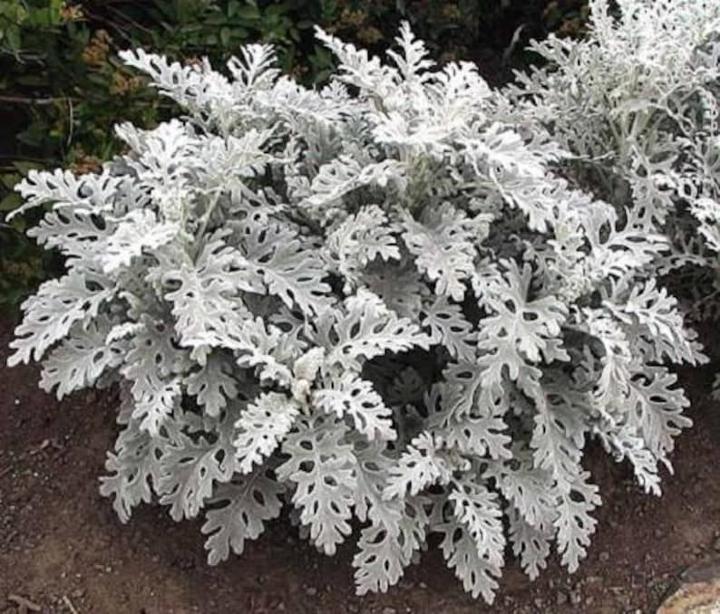 How to care for dust miller plant?
How to care for dust miller plant?
1.Location:
Dusty miller plants thrive in various locations, depending on the climate and growing conditions. Here's a brief explanation of suitable locations for dusty miller plants,Overall, dusty miller plants can thrive in a variety of locations as long as they have well-draining soil, adequate sunlight, and moderate watering. Whether used as a border plant, container specimen, or part of a mixed planting scheme, they add beauty and versatility to any garden or landscape.
2. Sunshine:
Dusty miller plants thrive in locations with ample sunlight, typically receiving at least six hours of direct sunlight per day. When grown in full sun, their silver-gray foliage develops its most vibrant coloration, adding brightness and contrast to the garden or landscape. While dusty miller plants prefer full sun, they can tolerate partial shade, especially in hot climates or during the afternoon hours when sunlight is intense. In areas with scorching summers, providing some afternoon shade can help prevent leaf burn and keep the plants looking their best. Overall, providing dusty miller plants with sufficient sunlight is crucial for their health and appearance. Whether grown in full sun or partial shade, they will reward gardeners with their striking foliage and easy-going nature.
3.Soil:
Dusty miller plants are susceptible to root rot if grown in soggy or poorly-draining soil. Therefore, it's essential to plant them in soil that allows excess water to drain away quickly. Amending heavy clay soil with organic matter like compost can improve drainage and create a more favorable growing environment for dusty millers.
4.Hydration:
Proper hydration is essential for the health and vigor of dusty miller plants (Senecio cineraria). Here's a brief explanation of their hydration needs:
Moderate Watering
Avoid Overwatering
Watering Frequency
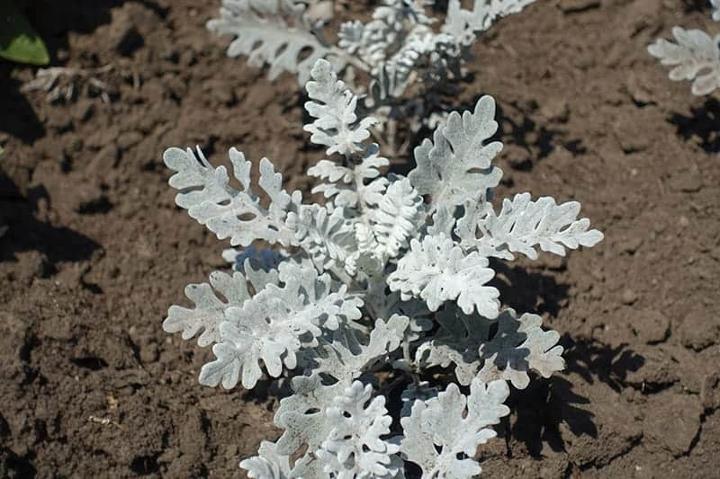
5.Nourishment:
Dusty miller plants (Senecio cineraria) do not require heavy feeding, but providing them with adequate nourishment can support healthy growth and vibrant foliage. Dusty miller plants benefit from occasional fertilization with a balanced, slow-release fertilizer. Choose a fertilizer with equal parts nitrogen, phosphorus, and potassium (e.g., 10-10-10) or a similar ratio. Apply the fertilizer according to the manufacturer's instructions, typically every 4-6 weeks during the growing season (spring to early fall).
6.Issues:
Dusty miller plants (Senecio cineraria) are generally low-maintenance, but they may encounter some common issues. Here's a brief explanation of potential problems: Powdery Mildew , Root Rot.
What are the benefits of the dust miller plant?
Dusty miller plants (Senecio cineraria) offer several benefits in the garden and landscape. Here's a brief explanation of their advantages: Ornamental Foliage, Low Maintenance, Versatility
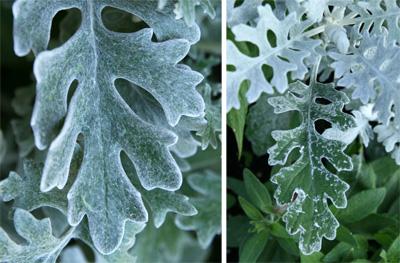
FAQS about growing dust miller plant
1.How do you propagate dust miller plant?
Dusty miller plants (Senecio cineraria) can be propagated through several methods :- Seeds , Cuttings.
2.Are there any common pests or diseases that affect the dust miller plant?
Yes, dusty miller plants (Senecio cineraria) can be susceptible to certain pests and diseases. These small, soft-bodied insects feed on the sap of dusty miller plants, causing leaves to curl, yellow, or distort. Aphids can be controlled with insecticidal soap, neem oil, or by spraying them off with a strong stream of water. Spider mites are tiny arachnids that feed on the undersides of dusty miller leaves, causing stippling, webbing, and leaf discoloration. They thrive in hot, dry conditions. Control spider mites by regularly hosing down dusty miller plants and using insecticidal soap or horticultural oil.
3.Can dust miller plant tolerate full sun or do they prefer partial shade?
Dusty miller plants (Senecio cineraria) generally prefer full sun to partial shade. While they can tolerate some shade, they thrive best in locations with ample sunlight. Dusty miller plants typically perform well when grown in full sun, receiving at least 6 hours of direct sunlight per day. In full sun, their silver-gray foliage tends to develop its most vibrant coloration, making them stand out in the garden or landscape. While dusty miller plants can tolerate partial shade, especially in hot climates or during the intense afternoon sun, they may not exhibit their best growth or coloration in shadier conditions. If grown in partial shade, the foliage may appear less silver and vibrant compared to plants grown in full sun.
4.How often should dust miller plant be watered?
The frequency of watering for dusty miller plants (Senecio cineraria) depends on several factors, including the weather, soil type, and growing conditions. Once established, dusty miller plants are relatively drought-tolerant and prefer to be on the drier side. Water them deeply but infrequently, allowing the top inch or so of soil to dry out between waterings. Before watering dusty miller plants, check the moisture level of the soil by inserting your finger into the soil near the base of the plant. If the soil feels dry to the touch, it's time to water. Avoid overwatering, as this can lead to root rot and other moisture-related issues.
5.Can dust miller plants be grown indoors as houseplants?
Dusty miller plants (Senecio cineraria) are typically grown outdoors as ornamental plants in gardens and landscapes. However, they can be grown indoors as houseplants under the right conditions. Dusty miller plants prefer bright, indirect light when grown indoors. Place them near a south- or west-facing window where they can receive several hours of sunlight each day. If natural light is limited, you can supplement with artificial grow lights to provide adequate illumination. Dusty miller plants thrive in temperatures between 60-75°F (15-24°C). Avoid exposing them to drafts, temperature extremes, or sudden fluctuations, as these can stress the plants and affect their growth.
